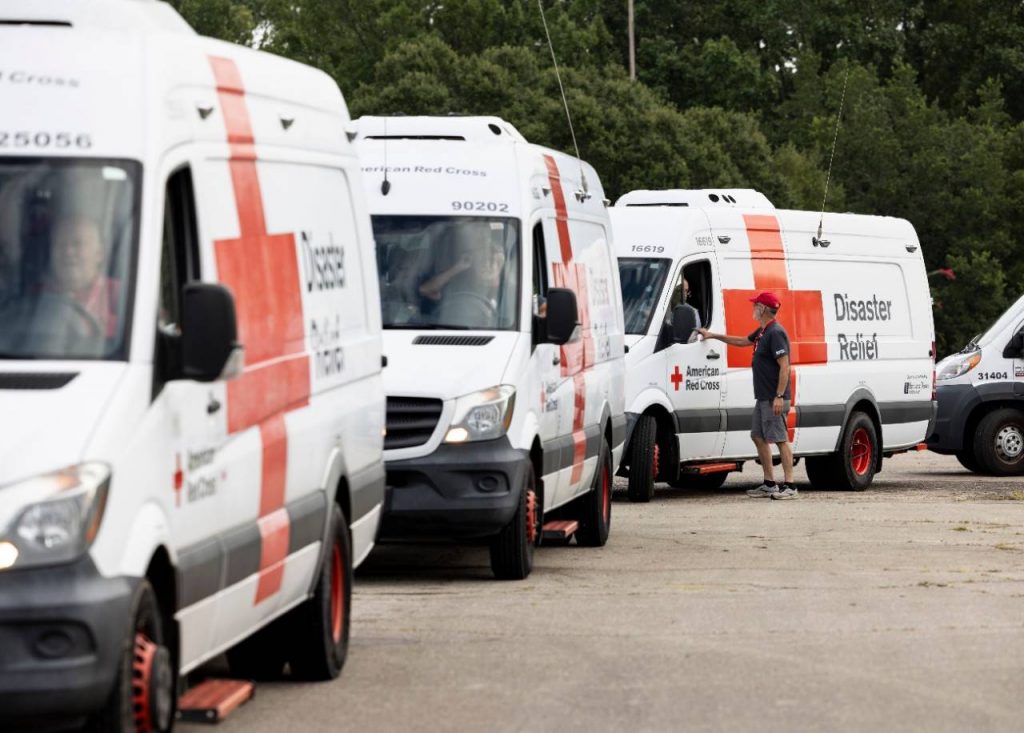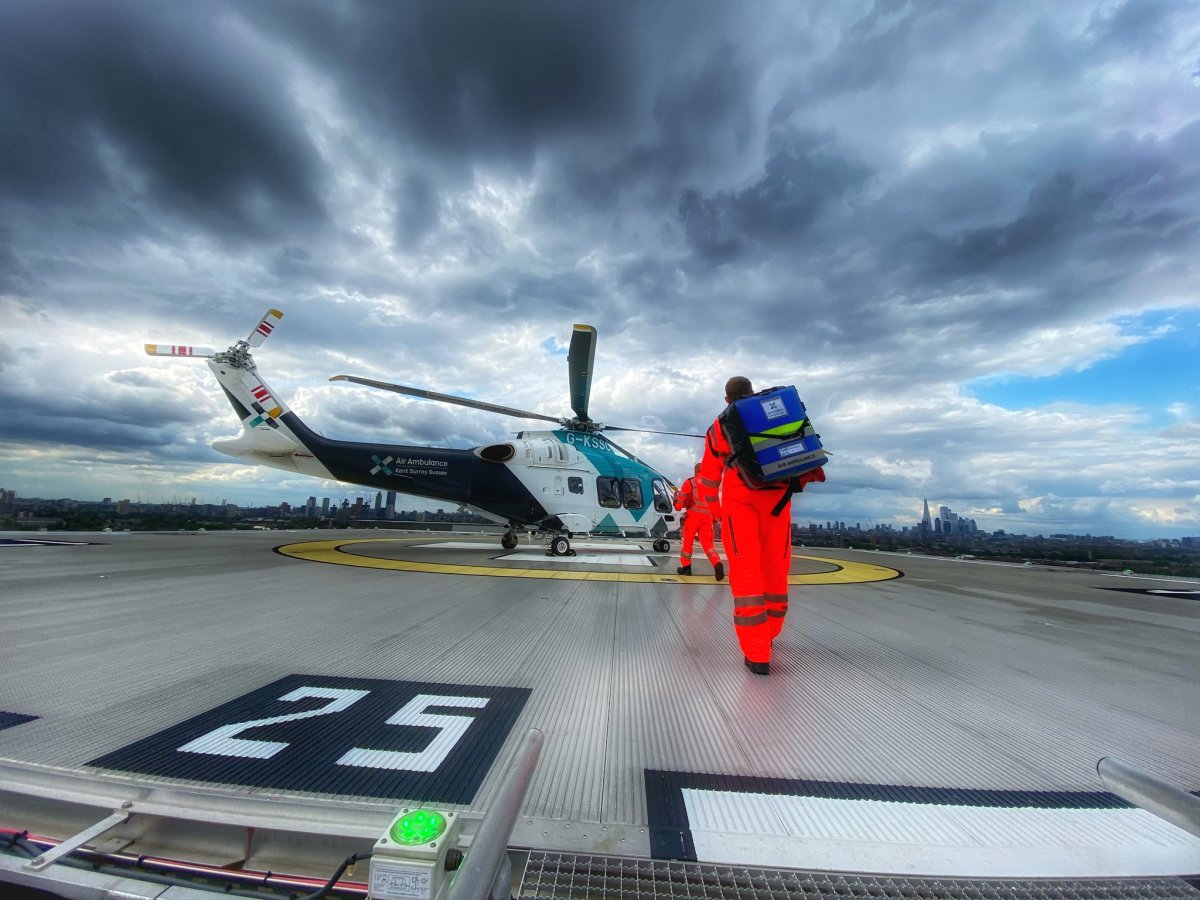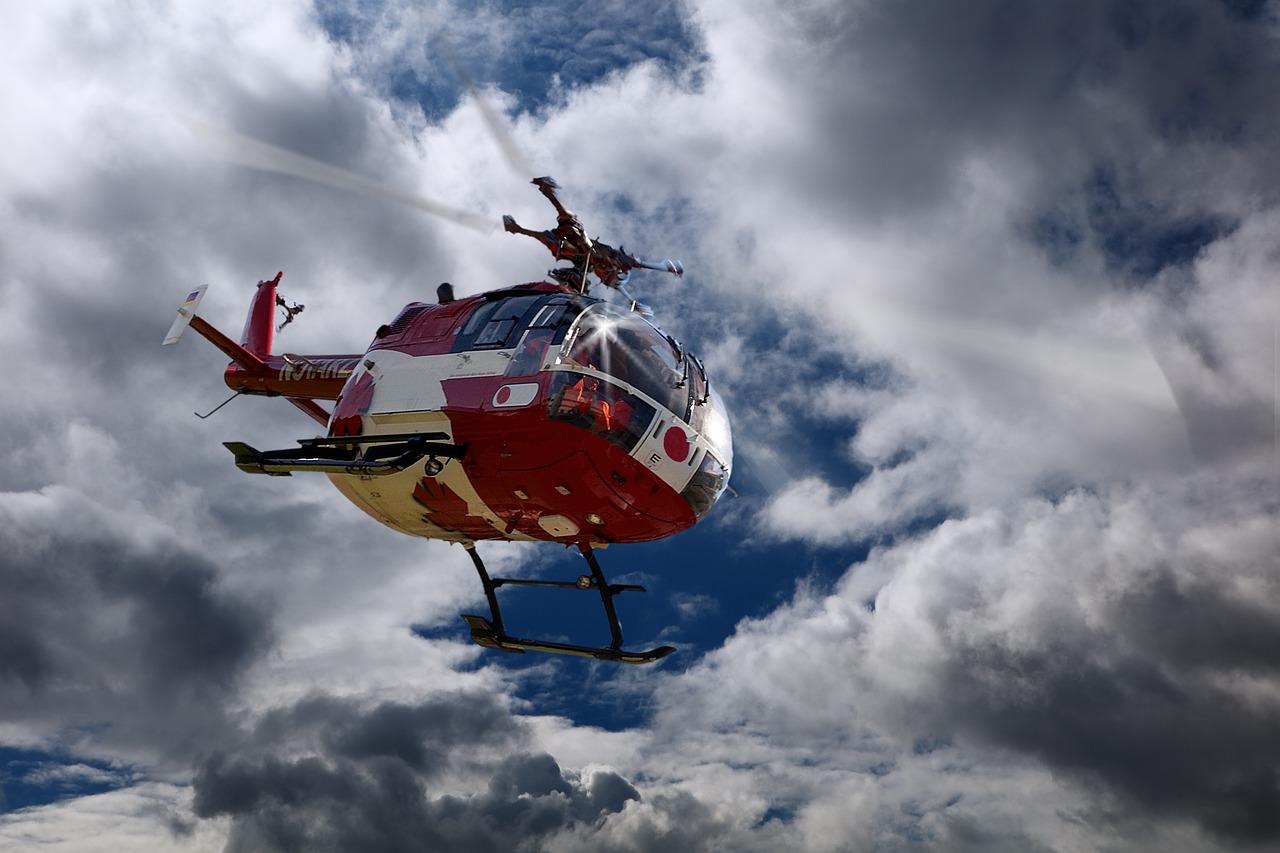Imagine a scenario where a natural disaster strikes, leaving countless lives in peril. In such dire circumstances, time is of the essence, and quick access to medical care can mean the difference between life and death. This is where the crucial partnership between air ambulances and disaster relief comes into play. Air ambulances provide vital support by swiftly transporting critically injured individuals to hospitals and medical facilities, even in the most remote and hard-to-reach areas. In the face of disaster, these life-saving vehicles become a lifeline for those in need, bridging the gap between immediate medical attention and survival. In this article, we will explore the importance of this partnership and the role air ambulances play in disaster relief efforts.

Part 1: Introduction to Air Ambulances and Disaster Relief
1.1 What are Air Ambulances?
Air ambulances, also known as medical helicopters or aeromedical services, are specialized aircraft that are equipped with medical equipment and staffed by trained medical professionals. These aircraft are designed to provide emergency medical transportation and critical care services to patients in need. Air ambulances play a vital role in the field of emergency medical services, as they offer a rapid and efficient means of transport for patients who require urgent medical intervention.
1.2 The Role of Air Ambulances in Emergency Medical Services
In emergency medical services, time plays a crucial role in saving lives. Air ambulances serve as a vital link between the site of the emergency and the healthcare facility, ensuring that patients receive the necessary medical care as quickly as possible. These aircraft are equipped with state-of-the-art medical equipment, including life support systems, to stabilize and treat patients during transport. The medical professionals on board, including doctors and paramedics, are highly trained to handle emergency situations and provide critical care during the flight.
1.3 What is Disaster Relief?
Disaster relief refers to the assistance provided to individuals and communities affected by natural or man-made disasters. These disasters can include hurricanes, earthquakes, tsunamis, floods, and other catastrophic events. In such situations, the immediate response and support from various organizations and agencies are essential to alleviate suffering, provide medical aid, and restore infrastructure and services. Air ambulances are an integral part of disaster relief efforts, playing a crucial role in providing medical assistance and transportation in these challenging circumstances.
1.4 The Importance of Quick and Efficient Emergency Medical Response
During emergencies and disasters, time is of the essence. Quick and efficient emergency medical response can mean the difference between life and death for those affected. Air ambulances offer the advantage of rapid deployment and accessibility to remote or hard-to-reach areas, ensuring that medical assistance reaches those in need as quickly as possible. The ability to transport patients swiftly to medical facilities with advanced care capabilities is crucial for increasing their chances of survival and minimizing long-term health complications. The partnership between air ambulances and disaster relief efforts is, therefore, crucial in providing effective emergency medical response and saving lives.
Part 2: The Role of Air Ambulances in Disaster Relief Efforts
2.1 Rapid Deployment and Accessibility
One of the most significant advantages of air ambulances in disaster relief efforts is their ability to rapidly deploy to affected areas. Unlike ground-based emergency services, air ambulances can bypass traffic congestion, damaged infrastructure, and challenging terrain, enabling them to reach disaster zones quickly. This rapid response is crucial in situations where immediate medical attention is critical, such as in cases of severe injuries, trauma, or life-threatening medical conditions. The accessibility of air ambulances to remote or hard-to-reach areas ensures that even the most vulnerable individuals receive timely medical care.
2.2 Air Ambulances as Evacuation Tools
In many disaster scenarios, the evacuation of injured individuals or those in immediate danger is a top priority. Air ambulances are instrumental in facilitating these evacuations by providing swift and safe transportation for patients requiring urgent medical care. Whether it’s airlifting injured individuals from inaccessible locations or transporting critically ill patients to hospitals with specialized facilities, air ambulances play a crucial role in evacuating those in need during disaster situations. This capability not only saves lives but also relieves pressure on ground-based emergency services, allowing them to focus on other aspects of disaster relief.
2.3 Transportation of Medical Personnel and Supplies
In disaster zones, the availability of medical personnel and supplies is often limited or compromised. Air ambulances can transport medical professionals, including doctors, nurses, and paramedics, to the affected areas, ensuring that there is an adequate workforce to provide medical assistance. Additionally, these aircraft can also transport essential medical supplies, such as medications, equipment, and blood products, to the disaster zones. This transportation of medical personnel and supplies is critical for establishing temporary medical facilities, treating the injured, and providing necessary medical care to those affected by the disaster.
2.4 Support for Ground-based Emergency Services
Air ambulances not only provide direct medical assistance but also offer valuable support to ground-based emergency services operating in disaster zones. The rapid transportation of patients by air ambulances reduces the workload on ground-based ambulances, allowing them to focus on less critical cases or assist with other aspects of disaster relief efforts. Air ambulances can also provide situational awareness to ground-based emergency services by relaying information about the conditions and needs of the affected areas. This coordination and collaboration between air and ground-based emergency services are vital for maximizing the efficiency and effectiveness of disaster relief operations.

Part 3: Challenges Faced by Air Ambulances in Disaster Relief
3.1 Limited Resources and Infrastructure in Disaster Zones
Disaster zones often present significant challenges in terms of limited resources and compromised infrastructure. These challenges can include damaged or impassable runways, inadequate fuel availability, congested airspace, and limited healthcare facilities. Air ambulances operating in such environments must navigate these obstacles and adapt their operations to ensure efficient and effective medical response. The availability of suitable landing zones, access to fuel and maintenance support, and coordination with local authorities pose additional challenges that must be addressed to ensure seamless operations.
3.2 Adverse Weather Conditions
Disasters, especially natural disasters, are often accompanied by adverse weather conditions such as heavy rainfall, high winds, or extreme temperatures. These weather conditions can pose significant challenges to air ambulance operations, affecting visibility, maneuverability, and the overall safety of the flight. Adapting to adverse weather conditions requires skilled pilots, advanced weather forecasting systems, and the ability to make real-time decisions regarding flight routes and landing locations. Overcoming these challenges ensures that air ambulances can continue to operate and provide critical medical care, even in the most demanding weather conditions.
3.3 Coordination and Communication Issues
Effective coordination and communication are vital in disaster relief operations involving air ambulances. Multiple organizations, agencies, and entities are often involved in the response, including local authorities, healthcare providers, disaster management teams, and military personnel. Ensuring seamless coordination among all stakeholders is essential to avoid duplication or gaps in services and to optimize the use of resources. Communication systems must be robust, reliable, and capable of functioning in challenging environments to facilitate timely and accurate information sharing between all parties involved in the disaster relief efforts.
3.4 Safety and Security Concerns
Operating in disaster zones poses inherent risks to air ambulance crews, including safety and security concerns. The unstable and unpredictable nature of disasters can result in hazardous conditions, including unstable structures, active fires, or violence in the affected areas. Air ambulances must have protocols and procedures in place to ensure the safety of the crew, patients, and the integrity of the aircraft during the mission. Adequate security measures, including support from local law enforcement or military personnel, may also be necessary to protect the air ambulance and its crew from potential threats.
Part 4: Important Considerations for Effective Air Ambulance Disaster Relief
4.1 Pre-positioning of Air Ambulances
To enhance the efficiency and effectiveness of air ambulance disaster relief operations, pre-positioning of aircraft in strategic locations is crucial. By strategically stationing air ambulances in disaster-prone areas or regions with high vulnerability, response times can be significantly reduced. This pre-positioning allows for immediate deployment in the event of a disaster, maximizing the chances of saving lives and reducing the overall impact of the emergency. Close collaboration between air ambulance service providers, disaster management agencies, and local authorities is essential to determine the most suitable locations for pre-positioning air ambulances.
4.2 Collaboration and Partnerships
Effective disaster relief operations require collaboration and partnerships between various organizations and agencies involved in the response. This includes close coordination between air ambulance providers, emergency medical services, healthcare facilities, disaster management agencies, and local authorities. Establishing and maintaining these partnerships ensures seamless integration of services, sharing of resources, and efficient utilization of available assets. Additionally, collaboration with international organizations and neighboring countries can be crucial in situations where the scale of the disaster exceeds the local capacity to respond.
4.3 Training and Preparedness
Training and preparedness play a vital role in ensuring the effectiveness of air ambulance disaster relief operations. Medical professionals and flight crews must receive specialized training in disaster response, including disaster medicine, triage, and tactical medical care. This training equips them with the necessary skills to operate in challenging environments and respond effectively to mass casualty incidents. Regular drills, simulations, and exercises are also essential to test and refine the response protocols, identify areas for improvement, and ensure a high level of readiness for disaster situations.
4.4 Technology Advancements
Advancements in technology have significantly enhanced the capabilities of air ambulances in disaster relief efforts. Improved navigation systems, real-time weather monitoring, and sophisticated communication platforms have all contributed to safer and more efficient operations. Additionally, innovations in medical equipment and telemedicine have extended the range of medical treatments that can be provided during air ambulance missions. Embracing these technological advancements and integrating them into air ambulance operations can further enhance the effectiveness and outcomes of disaster relief efforts.

Part 5: Real-life Examples of Air Ambulances in Disaster Relief
5.1 Hurricane Katrina, 2005
During Hurricane Katrina in 2005, air ambulances played a crucial role in the evacuation and medical response efforts. The widespread flooding and infrastructure damage made ground transportation nearly impossible, requiring air ambulances to airlift patients to safety and transport medical personnel and supplies to affected areas. The rapid deployment of air ambulances, along with their ability to reach remote and inaccessible locations, saved countless lives and provided critical medical care to those in need.
5.2 Earthquake in Haiti, 2010
Following the devastating earthquake in Haiti in 2010, air ambulances were instrumental in providing emergency medical response and evacuating critically injured individuals. The destruction of healthcare facilities and the lack of infrastructure made ground transportation challenging. Air ambulances offered a lifeline by transporting injured patients to nearby countries with better medical facilities and capabilities. They also facilitated the transportation of medical supplies and personnel to support the overwhelmed local healthcare system.
5.3 Tsunami in Japan, 2011
The tsunami that struck Japan in 2011 brought widespread destruction and posed immense challenges in providing medical assistance to affected individuals. Air ambulances played a critical role in transporting medical teams and supplies to the affected regions, particularly when roadways and railways were severely damaged. These aircraft also facilitated the evacuation of injured survivors to hospitals and medical facilities outside the disaster zone, where they could receive specialized care and treatment.
5.4 Floods in Kerala, India, 2018
The floods that struck the state of Kerala in India in 2018 resulted in massive devastation and the displacement of thousands of people. Air ambulances were deployed to rescue stranded individuals, particularly those in remote areas cut off from ground transportation. These aircraft provided medical assistance to the injured and transported them to hospitals functioning outside the flood-affected zones. The agility and accessibility of air ambulances played a crucial role in reaching those in need and ensuring timely medical care.
Part 6: Conclusion
6.1 Recap of the Crucial Partnership Between Air Ambulances and Disaster Relief Efforts
The partnership between air ambulances and disaster relief efforts is a crucial component of emergency medical response. Air ambulances provide rapid deployment, accessibility to remote areas, and specialized medical care, enhancing the effectiveness and efficiency of disaster relief operations. These aircraft serve as vital evacuation tools, transport medical personnel and supplies, and offer support to ground-based emergency services. The combination of air ambulances and disaster relief efforts saves lives and minimizes the impact of emergencies on affected communities.
6.2 Importance of Continued Support and Investment
To ensure the continued effectiveness of air ambulance disaster relief operations, it is essential to provide ongoing support and investment. This includes adequate funding for the maintenance and modernization of air ambulance fleets, training and education for medical professionals and flight crews, and the development of robust communication and coordination systems. Collaboration between air ambulance service providers, emergency medical services, healthcare facilities, and disaster management agencies should be prioritized to establish a seamless response infrastructure. Additionally, embracing technological advancements in air ambulance operations can further enhance the capabilities and outcomes of disaster relief efforts. Continued support and investment in air ambulances are crucial for saving lives and minimizing the impact of emergencies on affected communities.




